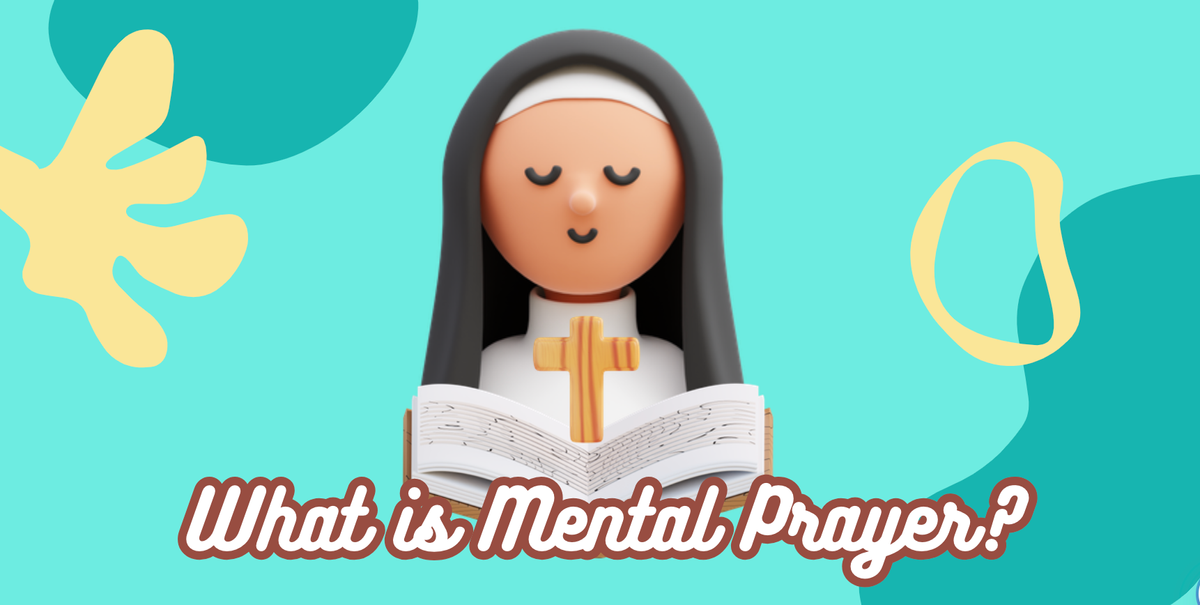108: What is Mental Prayer or Catholic Meditation?

Chapter: The Power of Mental Prayer
Meditation, also known as mental prayer, is a beautiful practice in the Catholic faith. It allows us to quiet our minds and open our hearts to God. Mental prayer is a special time when we reflect deeply on God's truths and mysteries. We do this to feel closer to God and understand what He wants us to do. People who love and respect God have always practiced meditation. And it helps us to grow spiritually and understand His will for our lives. For centuries, Catholics have found peace, guidance, and a closer relationship with God through mental prayer.
In the Bible, there are many examples of meditation. For instance, in the Old Testament, we see it mentioned in the book of Psalms, Ecclesiasticus chapter 14 verse 22, Isaiah chapter 26 verse 9 and chapter 57 verse 1, and Jeremiah chapter 12 verse 11. In the New Testament, Jesus is often shown meditating in the Gospels, and St. Paul talked about it too, like in Ephesians 6:18, Colossians 4:2, 1 Timothy 4:15, and 1 Corinthians 14:15.
Throughout history, The writings of the early Church Fathers and great theologians often came from their deep meditation and study of religious mysteries. And many of these saints have told us how helpful meditation can be. Some of the saints who wrote on mental prayer are St. Chrysostom, St. Jerome, St. Basil, St. Augustine, and St. Thomas Aquinas.
However, long ago, there wasn't a set way to meditate. People would just find their own time and way to think about God and pray. But around the fifteenth century, people started to create more structured ways to meditate.
Monks and nuns had specific times for group prayer and were allowed, but not required, to think about religious texts during private prayer. In the early 1500s, some religious groups set rules for private prayer time, and by the middle of the century, other groups had structured methods for private prayer. Eventually, Saint Theresa introduced a two-hour daily meditation rule for the Carmelites. Many other organizations of monks and nuns followed, introducing their own rules for daily meditation.
Sometime later, Saint Ignatius created a detailed method for meditation in his spiritual exercises. This method helped many people to practice meditation regularly, not just monks and nuns, but regular people as well.
In conclusion, the Catholic tradition of meditation is more than just a moment of peace; it's a way to deepen our faith and connect with God on a profound level. By setting aside time for meditation, we follow in the footsteps of Christ and the saints who have shown us the importance of this practice. Meditation, which is also known as mental prayer, can help us to align our lives with God's will and experience His love more fully.
If you want to start mental prayer, check out the following books: The Imitation of Christ, The Spiritual Exercises of St. Ignatius of Loyola, The Introduction to the Devout Life, and The Interior Castle.
Quiz
1. Please read the question carefully. 2. Think of an answer. 3. Click to check the answer.
🧐 Who introduced a two-hour daily meditation rule for the Carmelites? a) St. Augustine b) St. Theresa c) St. Ignatius d) St. Jerome
b) St. Theresa
🌟 In the New Testament, Jesus is often shown meditating in the ______
Gospels
😇 Saint Ignatius created a detailed method for meditation in his ______ exercises.
spiritual
✨ True or False: Meditation in the Catholic tradition is simply a moment of peace without any deeper significance.
False. It is also a time to connect deeper with God.
Source





